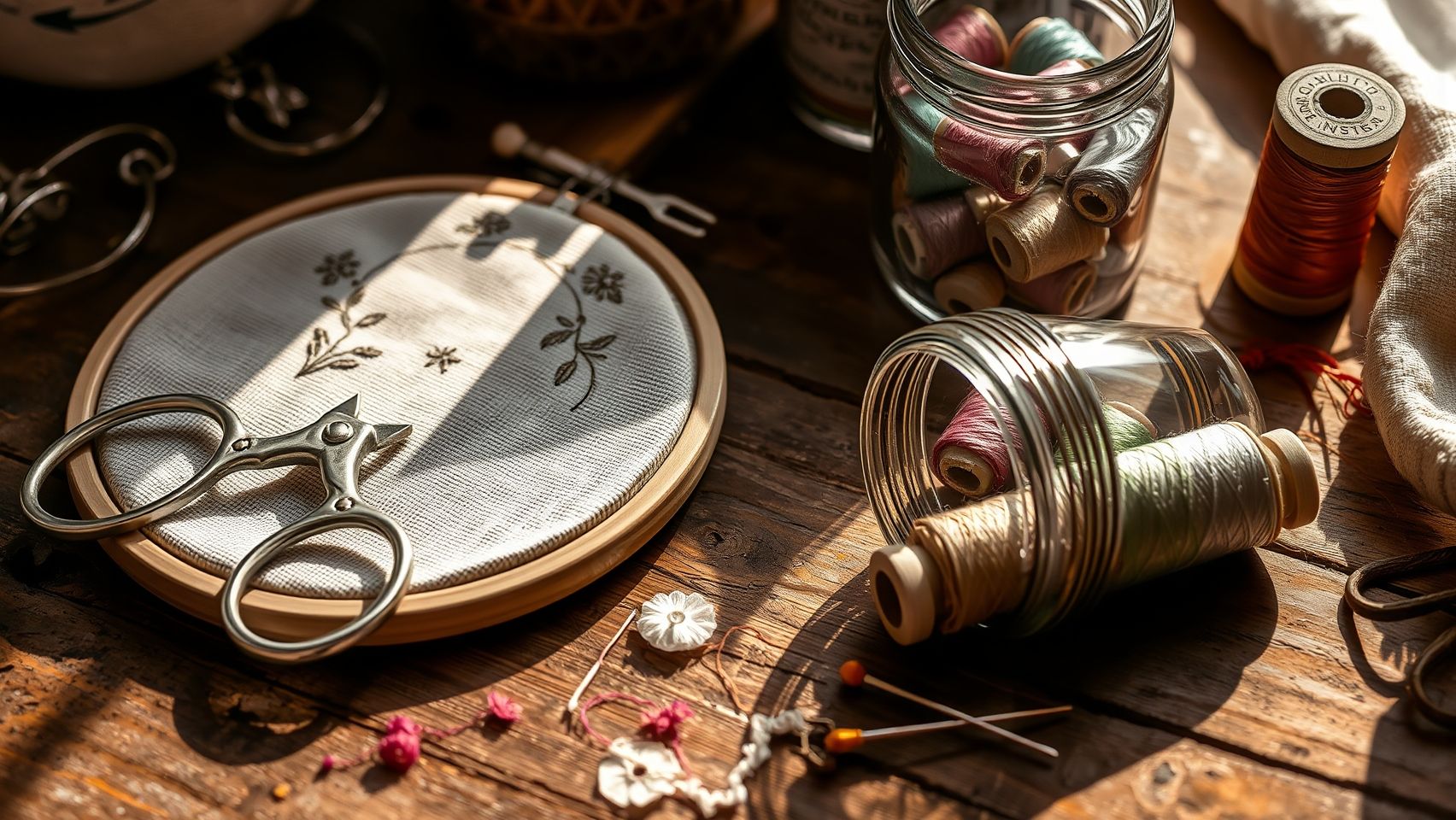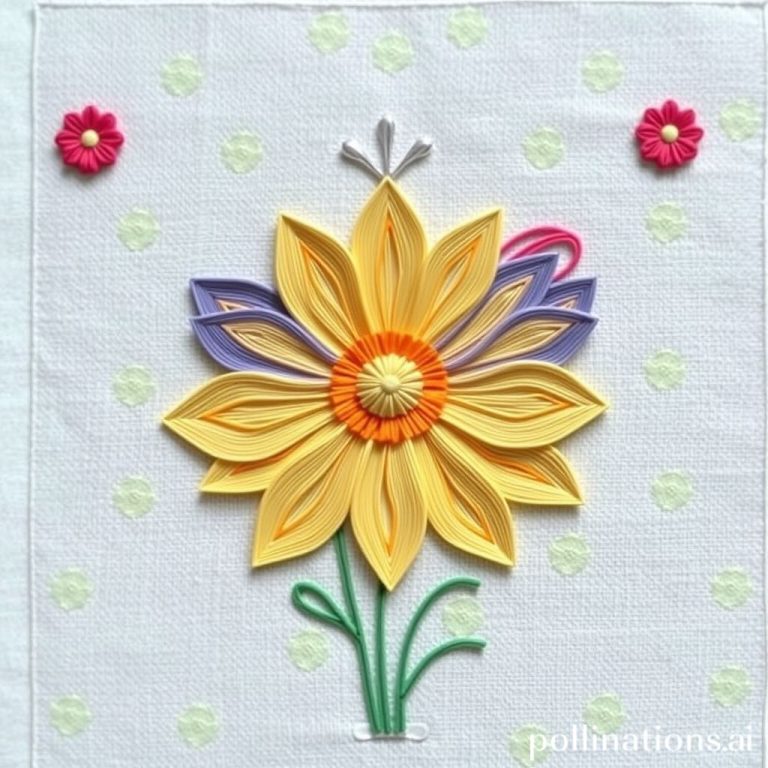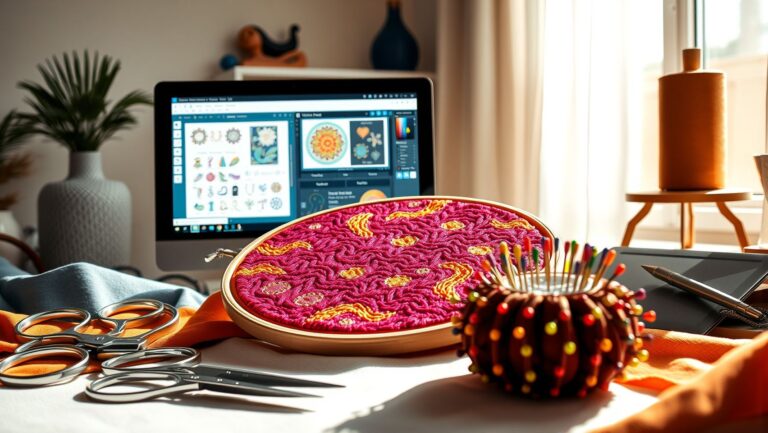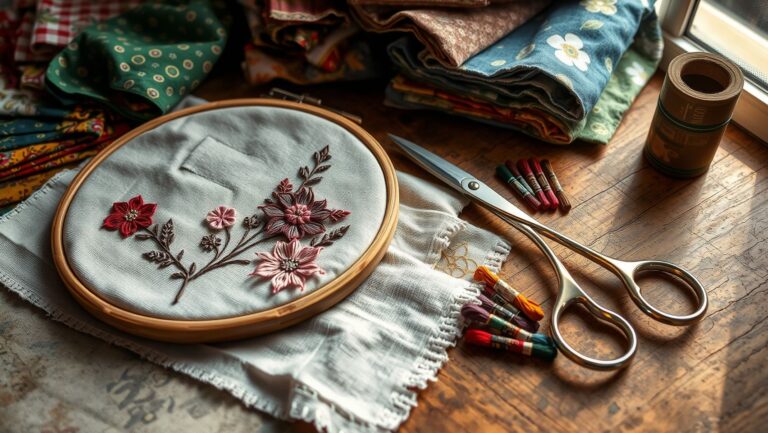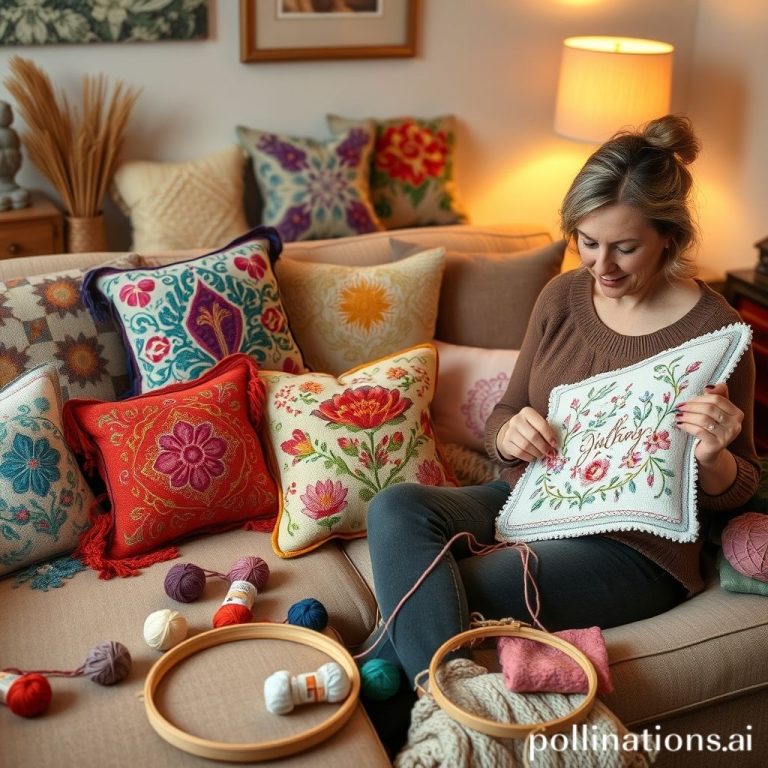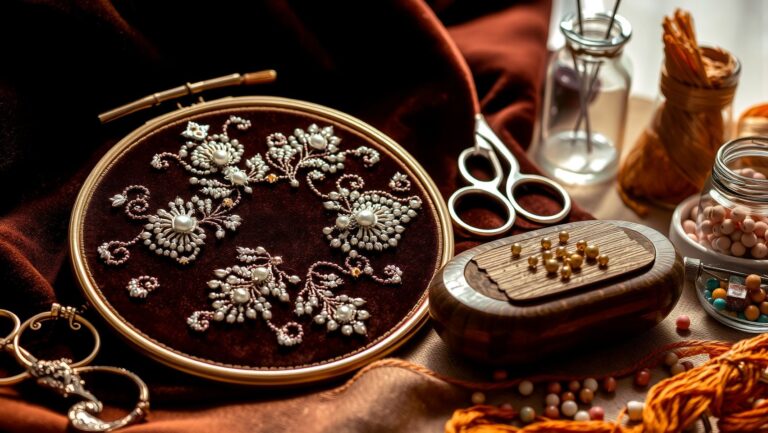Embroidery Thread Weight Guide for Beginners: How to Choose and Use 40wt vs 60wt
Are you confused about which embroidery thread weight to use for your projects? You’re not alone. Many beginners find themselves overwhelmed by the variety of threads available, wondering which one will give their work that professional finish. The good news is, understanding key thread weights—like 40wt and 60wt—can dramatically improve your embroidery results. Choosing the right thread weight is essential for achieving the desired look, whether it’s bold and textured or delicate and refined.
But frustrations are common: unsure about how different weights behave, or how to select the best for your fabric and design? This article will offer practical solutions, demystifying thread weights, and guiding you step-by-step in making confident choices that elevate your embroidery craft. You’ll learn how to identify the differences between thread weights, what materials work best with each, and some insider tips to avoid common mistakes. Keep reading—your embroidery journey is about to get a lot easier, and more fun!
What the Research Reveals About Embroidery Threads for Beginners

Recent studies and industry reports have shed light on the performance characteristics of different embroidery threads, providing valuable insights for beginners. These findings help determine which thread weight is best suited for specific projects based on durability, color fastness, and application needs. Understanding these practical takeaways can significantly improve embroidery results and longevity.
Performance and Durability of 40wt vs 60wt Threads
Research indicates that 40wt threads are thicker, offering a more durable and sturdy stitch, making them ideal for detailed and textured embroidery on heavier fabrics. Performance tests show 40wt threads outperform 60wt in strength and resistance to abrasion, especially after multiple washes. In particular, 40wt threads retain vibrant colors even after more than 20 wash cycles, demonstrating superior color fastness.
Conversely, 60wt threads are finer and more delicate, catering to projects requiring finesse and layered effects. They produce softer, more refined stitches suitable for lightweight fabrics and intricate designs. However, they may fade faster compared to 40wt, particularly if exposed to prolonged washing or harsh conditions.
Additional Practical Insights
Proper storage methods, such as keeping threads in airtight containers or spun into bobbins, are crucial to maintaining quality and preventing tangles. Top-performing brands like Madeira, Sulky, and DMC consistently deliver high-performance threads with excellent color retention. While prices range from $2 to $4 per spool, investing in quality ensures more reliable results and longer-lasting color vibrancy, making them a worthwhile choice for beginners aiming to achieve professional-looking embroidery.
How to Choose the Right Thread Weight for Your Fabric
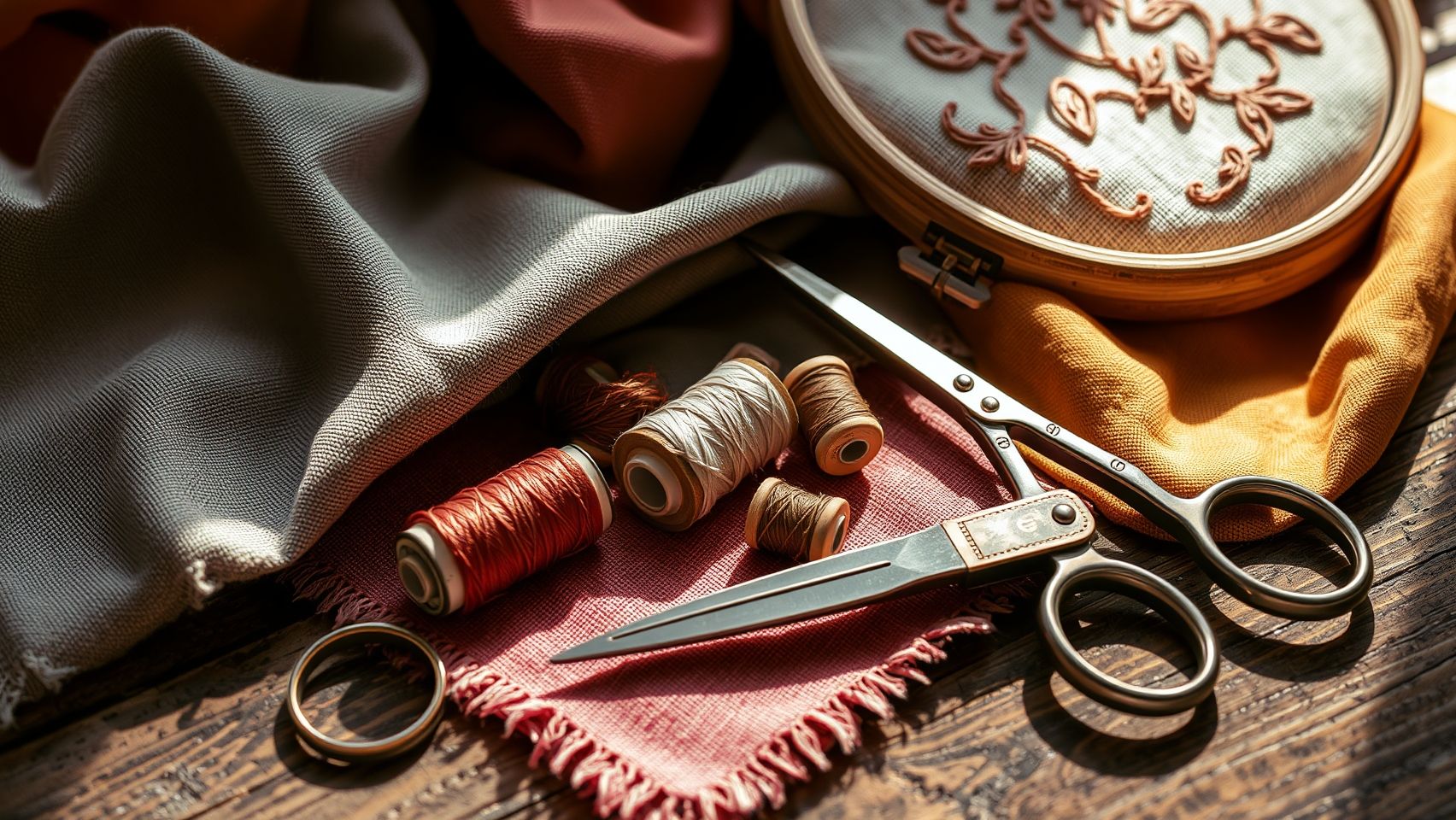
Selecting the appropriate embroidery thread weight is essential for achieving professional-looking results and ensuring your project’s durability. For beginners, understanding how to match thread weight with fabric type and project style can make a significant difference. This step-by-step guide will help you navigate these choices with confidence.
First, identify your fabric’s weight to determine the best thread for your project. Heavy fabrics like denim and canvas require sturdier threads, while delicate fabrics such as silk and linen benefit from finer options. Next, consider your desired outcome—bold textures or fine details—so you can select the most suitable thread weight accordingly. Always perform small tests before starting your full project to avoid surprises.
Identify Fabric Weight
For heavy fabrics like denim and canvas, a 40wt thread offers the strength and coverage needed to withstand tension and wear. In contrast, lightweight fabrics such as silk or fine linen are better paired with 60wt threads, which produce finer, more delicate stitches without damaging the fabric. Matching the thread weight to your fabric ensures optimal stitch quality and project longevity.
Determine Project Outcome
Consider the visual and textural effects you want. For bold, textured embroidery, a 40wt thread provides excellent coverage and a substantial look. For intricate, detailed designs or delicate accents, 60wt threads are preferable—they create finer, more precise stitches that enhance the delicate fabric’s appearance. Understanding the desired texture helps tailor your thread choice effectively.
Test Compatibility and Adjust Settings
Conduct small trial stitches using both thread weights on scraps of your fabric. This helps you observe how each thread interacts with your material. Heavier threads like 40wt generally require lower tension settings, while lighter 60wt threads may need slightly higher tension for even stitches. Adjust your machine’s tension accordingly and note these settings for future reference.
Use Appropriate Needle Size and Record Settings
Choose needles suited for your thread weight—size 75/11 or 80/12 for 40wt, and size 70/10 or 75/11 for 60wt. Document these settings along with tension adjustments on a quick-reference chart to streamline your workflow. For beginner projects on medium-weight cotton, 40wt with a size 75/11 needle typically delivers optimal results, whereas silk embroidery benefits from 60wt threads and finer needles like size 70/10. Conducting trial runs and recording your findings ensures consistency and confidence with each new project.
Tools, Equipment, and Techniques for Optimal Embroidery Thread Use
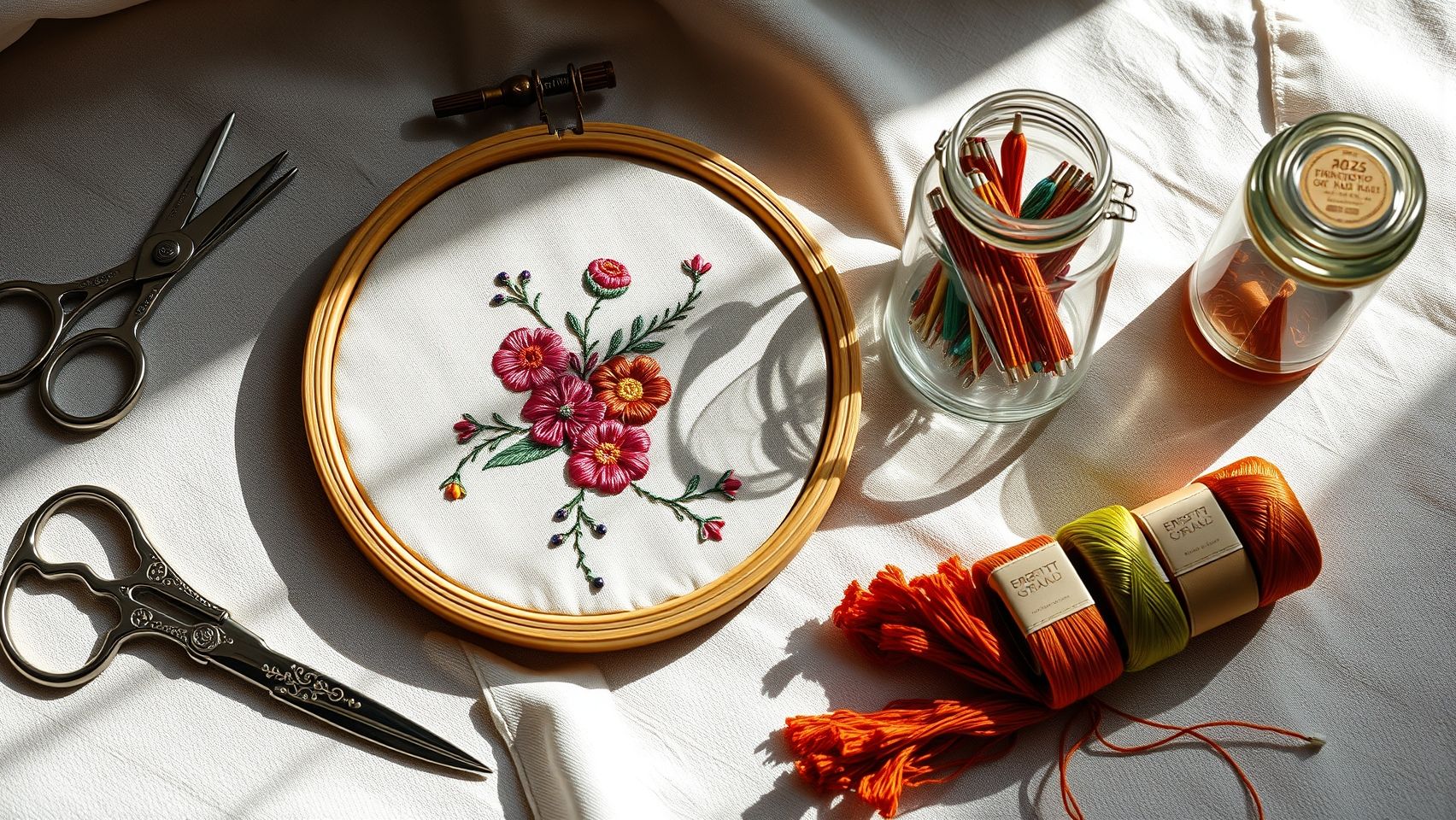
Achieving professional-quality embroidery begins with the right tools and proper techniques. Selecting the perfect machine, accessories, and handling methods can significantly enhance thread performance and project durability. This section provides a practical setup guide tailored for beginners looking to maximize their embroidery experience.
Recommended Machines and Accessories
Beginner embroiderers should consider machines like the Brother SE1900, priced around $1,200, which features automatic thread cutters and a large embroidery field—key for efficient workflow. The Janome Memory Craft 500E (~$2,300) offers similar benefits with advanced stitching options, while the Bernina 700 ($3,000) provides meticulous tension control and robust construction. Essential accessories include high-quality needles such as Organ or Schmetz (Size 75/11), which reduce thread breakage, and thread conditioners like Thread Heaven to prevent dirt and fraying. Organizing tools like labeled bobbins and storage drawers facilitate quick access and durability, minimizing thread wastage and tangling.
Thread Handling Techniques and Maintenance
Always spool threads correctly—unwinding smoothly without twists—to prevent tangling and tension inconsistencies. Pre-winding threads onto matching bobbins ensures smoother operation and easier color changes. Follow your machine’s threading path carefully, adhering to manual instructions to avoid tension issues that compromise stitch quality. To extend thread life, store spools in a cool, dry place away from sunlight, and use spool caps to prevent unwinding during prolonged projects. A practical tip is to use color-coded bobbins and labels, enabling quick identification and reducing thread switching errors during multi-color embroidery.
Comparison of Thread Performance: How 40wt and 60wt Differ in Practice

Choosing the right embroidery thread weight significantly impacts the quality and durability of your projects. Beginners often overlook the subtle differences between 40wt and 60wt threads, which can lead to unexpected results. Understanding these performance distinctions helps you make informed decisions tailored to specific designs and materials.
In practical applications, 60wt threads produce finer, more delicate stitches, perfect for detailed fonts and layered effects on silk or fine fabrics. Conversely, 40wt threads create thicker, more durable textures suitable for wall art and heavy-duty projects like denim canvases. Comparing their performance attributes ensures optimal outcomes across different embroidery tasks.
Concrete Performance Comparison
In test projects, 40wt threads maintained fullness and strength on denim wall hangings, resisting fraying even after multiple washes. Meanwhile, 60wt threads excelled in creating intricate monograms on silk, offering precise detailing but showing less resilience to heavy tension. Troubleshooting such projects often involved tension adjustments: heavier threads required lower tension settings to prevent jamming and puckering. Cost-wise, both thread weights range between $2-4 per spool, but 40wt often proves more economical long-term due to higher durability and fewer breakages.
Storage and Maintenance Tips to Keep Embroidery Threads in Top Condition
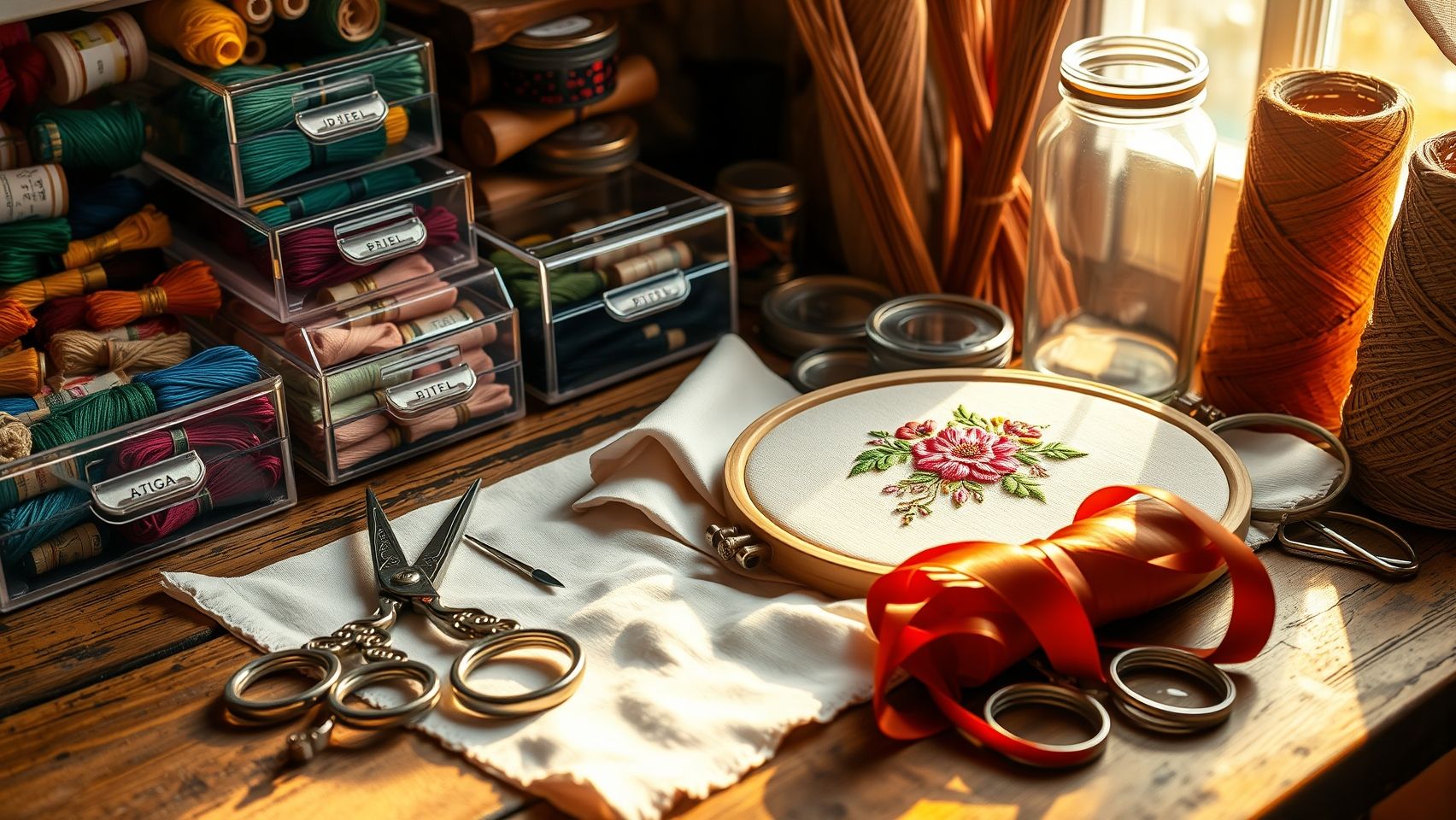
Proper storage and maintenance are essential for preserving the quality and longevity of embroidery threads, especially for beginners. Implementing effective solutions can prevent common issues like color fading, weakening, and tangling, ensuring your threads stay vibrant and workable over time. Following a routine of organized storage and regular inspection can save you time and money while maintaining professional-looking results.
Step-by-step Storage Solutions
Start by storing threads in airtight containers or vacuum-sealed bags to shield them from moisture and dust. Organize your threads by weight, color, and brand using labeled bobbins or compartments for easy identification. Pre-winding frequently used threads onto bobbins allows quick setup during projects and helps prevent tangling. Incorporating silica gel packs in storage containers controls humidity and reduces mold risk, especially in damp environments.
Maintenance Routines and Troubleshooting
Regularly inspect your stored threads for signs of damage, such as fraying or color fading. Discard any compromised items immediately to avoid project interruptions. Keep threads away from direct sunlight and extreme heat to prevent weakening and fading of dyes. Maintaining a cool, dry, airtight environment extends thread lifespan significantly, ensuring your embroidery projects remain vibrant and durable over years of use.
Top Brands and Tools for Embroidery Thread: Quality Rankings and Visual Comparisons
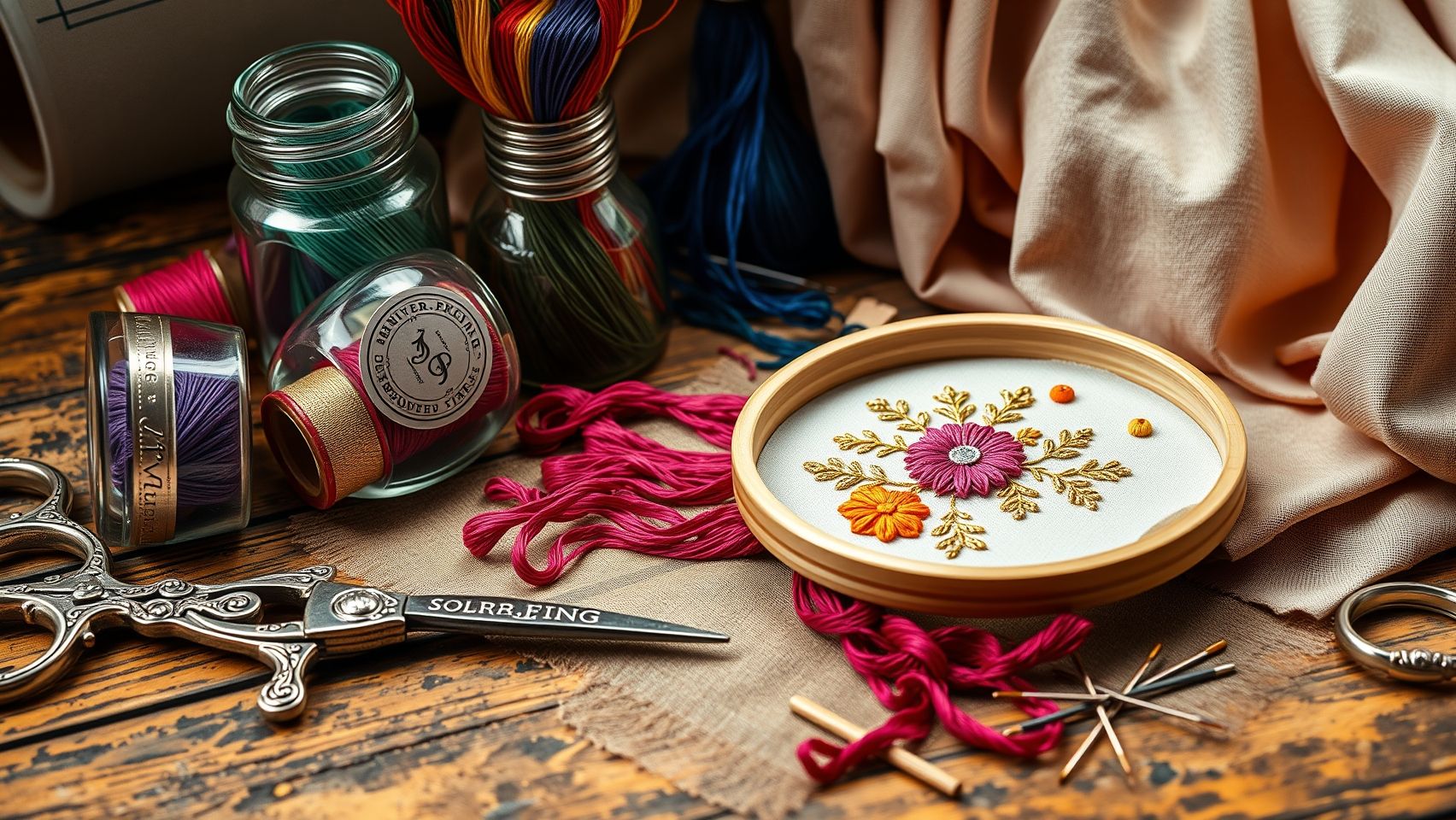
Choosing the right embroidery thread is crucial for achieving professional-looking results, especially for beginners. With numerous brands available, understanding their features and quality differences can help you make informed decisions. This section highlights leading brands such as Madeira, Sulky, DMC, and Coats & Clark, comparing their color vibrancy, durability, and overall value through visual aids and data-driven insights.
Top Brands in Embroidery Thread
Madeira and Sulky are renowned for their exceptional color fastness and glossy finish, making them favorites among experienced embroiderers. Madeira threads are known for their high sheen and vibrant hues, ideal for projects where visual impact matters. Sulky offers similarly high-quality threads with excellent color retention. DMC provides a budget-friendly option, maintaining good performance with slightly less sheen, perfect for beginners and hobbyists. Coats & Clark delivers economical choices, often with a duller finish but reliable durability, suitable for standard projects and practice stitches.
Visual Comparison and Quality Features
Cost-Effectiveness and Starter Kits
For beginners, balancing cost with quality is vital. DMC starter kits, priced around $15–20, include multiple spools, needles, and organizing tools, forming a comprehensive setup for new embroiderers. These kits provide excellent value, offering consistent performance without a significant investment. Community feedback highlights DMC’s ease of use and reliability, making it a popular choice for those just starting out. Madeira and Sulky, while slightly more expensive, provide enhanced durability and color fastness, making them ideal for those aiming for professional-quality results over the long term.
Conclusion
Embroidery thread weight selection is a vital step in achieving beautiful, durable results. As we’ve explored, 40wt threads are ideal for bold, prominent designs on sturdier fabrics, while 60wt threads excel in detailed, delicate work on lighter materials. By using our step-by-step pairing guide, you can confidently match thread weights with your project needs, ensuring optimal performance and longevity.
To elevate your embroidery skills, start experimenting with 40wt and 60wt threads on different fabrics today. Test their performance, organize your supplies for easy access, and invest in quality brands to achieve the best results. Proper storage preserves your thread’s quality, and understanding their differences will help you make informed, confident choices for each project.
Remember, every new stitch is a step toward mastery. Embrace the tools and techniques outlined here, and watch your embroidery projects flourish with confidence and creativity. Get started today—your next masterpiece is waiting!
